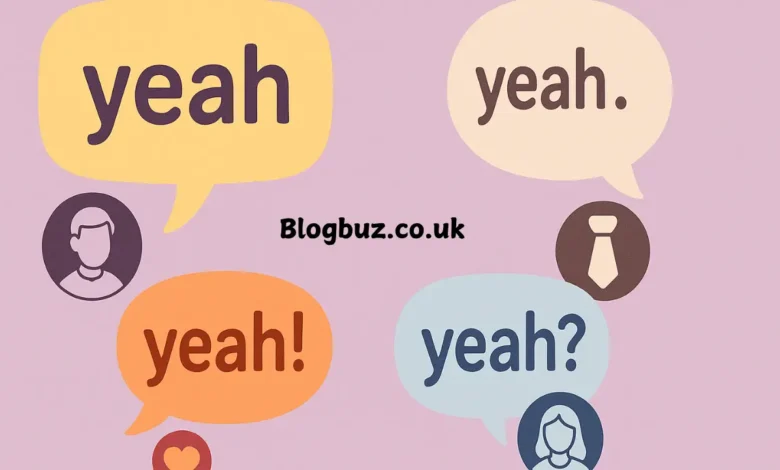How to Respond to Yeah: A Complete Guide for Every Situation

In daily communication, we often encounter short, seemingly simple replies like “yeah.” While it might appear straightforward, the way you respond to “yeah” can significantly affect the tone and direction of a conversation. Whether you’re chatting with a friend, communicating in a professional setting, or navigating a romantic relationship, knowing how to respond to yeah effectively is essential. This guide will explore the various meanings behind “yeah,” how to interpret them, and the best ways to react in multiple contexts.
Understanding the Meaning Behind “Yeah”
Before responding, it’s crucial to understand that “yeah” can carry multiple meanings depending on tone, context, and the relationship between the speakers. Here are the most common interpretations:
- Affirmative Response: A simple agreement or confirmation.
- Disinterest or Apathy: Indicates a lack of enthusiasm or engagement.
- Sarcasm: This could imply the opposite of what is said, especially in a sarcastic tone.
- Uncertainty: Suggests hesitation or indecision.
- Politeness: A non-committal way of responding without shutting down the conversation.
General Tips for Responding to “Yeah”
When you’re unsure of the intent behind a “yeah,” consider these strategies:
- Observe the Tone and Body Language: If you’re face-to-face or on video, non-verbal cues can offer insights.
- Consider the Context: What was said before “yeah”? The context can help clarify the meaning.
- Ask Open-Ended Questions: Encourage further conversation and deeper engagement.
- Match Their Energy: If the tone is casual, keep your response light; if the tone is severe, respond accordingly.
How to Respond to Yeah in Different Scenarios
Casual Conversations with Friends
- Example: You: “Did you watch the new episode of that show?” Friend: “Yeah.”
- Response: “What did you think of it? I thought the twist at the end was wild!”
Here, your goal is to extend the conversation. Use their “yeah” as a springboard to deeper discussion.
Romantic Relationships
- Example: You: “Do you want to go out for dinner tonight?” Partner: “Yeah.”
- Response: “Great! Are you in the mood for something specific, or should we try that new Thai place?”
In romantic contexts, tone matters a lot. A disengaged “yeah” might mean your partner isn’t entirely on board. Seek clarification or offer options.
Professional or Work Environments
- Example: You: “Did you finish the report?” Colleague: “Yeah.”
- Response: “Awesome. Can you send it over so I can review it before the meeting?”
In professional settings, keep your response clear and action-oriented. If the tone seems off, follow up diplomatically.
Text or Online Communication
The text lacks tone and body language, making interpretation difficult.
- Example: You: “Did you like the proposal?” Them: “Yeah.”
- Response: “Glad to hear! Do you think we should add more detail to the third section, or does it look good to go?”
When texting, assume neutral intent unless context strongly suggests otherwise. Follow up with a question to clarify or continue the discussion.
Responses Based on the Tone of “Yeah.”
Enthusiastic “Yeah!”
- Response: Match their enthusiasm: “I know, right? It was incredible!”
Dismissive or Disinterested “Yeah…”
- Response: Acknowledge and re-engage: “You don’t sound too convinced. Something on your mind?”
Sarcastic “Yeah, sure.”
- Response: Clarify intent: “Just checking—was that a real yes or are you being sarcastic?”
Uncertain “Yeah?”
- Response: Offer reassurance or options: “If you’re not sure, we can go over it again or try a different approach.”
Creative and Playful Responses
Adding a bit of humor or playfulness can make conversations more enjoyable, especially with friends or close contacts.
- “Yeah? That’s it? No fireworks or drum rolls?”
- “Yeah? You sound thrilled. Should I be worried?”
- “Wow, don’t sound so excited!”
These responses can lighten the mood and prompt a more engaged reply.
When Not to Push Further
Sometimes, it’s best not to force the conversation:
- If the other person wants to end the discussion.
- If their tone signals frustration or disinterest.
- If you’ve already clarified a point and they’re just acknowledging it.
In such cases, accept the “yeah” and let the conversation rest.
Responding to “Yeah” in Conflict or Sensitive Conversations
If you’re discussing something serious or emotional:
- Example: You: “I feel like we’ve been distant lately.” Them: “Yeah.”
- Response: “Thanks for being honest. Do you want to talk about it more now or later?”
A soft and empathetic follow-up encourages dialogue while respecting emotional boundaries.
Cultural and Generational Differences
In some cultures or among different age groups, “yeah” might be more common or have varying nuances. For example:
- Younger people may use “yeah” casually and frequently.
- In certain cultures, “yeah” might be considered too informal.
Be mindful of these differences to avoid miscommunication.
Alternatives to Responding Directly
If you’re unsure how to respond to yeah, you can also shift the topic or add commentary:
- “Anyway, I was thinking about our next steps.”
- “That reminds me, we need to plan for the weekend.”
This approach keeps the conversation moving without dwelling on ambiguity.
Conclusion
Responding to “yeah” might seem trivial at first glance, but it’s an opportunity to steer conversations, clarify meaning, and build rapport. Whether you’re talking to a friend, partner, colleague, or acquaintance, your response can set the tone for what comes next. Use this guide to navigate different scenarios with confidence, empathy, and clarity.

![swimsuit edition [abbb] - 1.20 21 swimsuit edition - chapter](https://blogbuz.co.uk/wp-content/uploads/2025/03/Custom-Dust-Collector-Filter-Bags-390x220.png)


